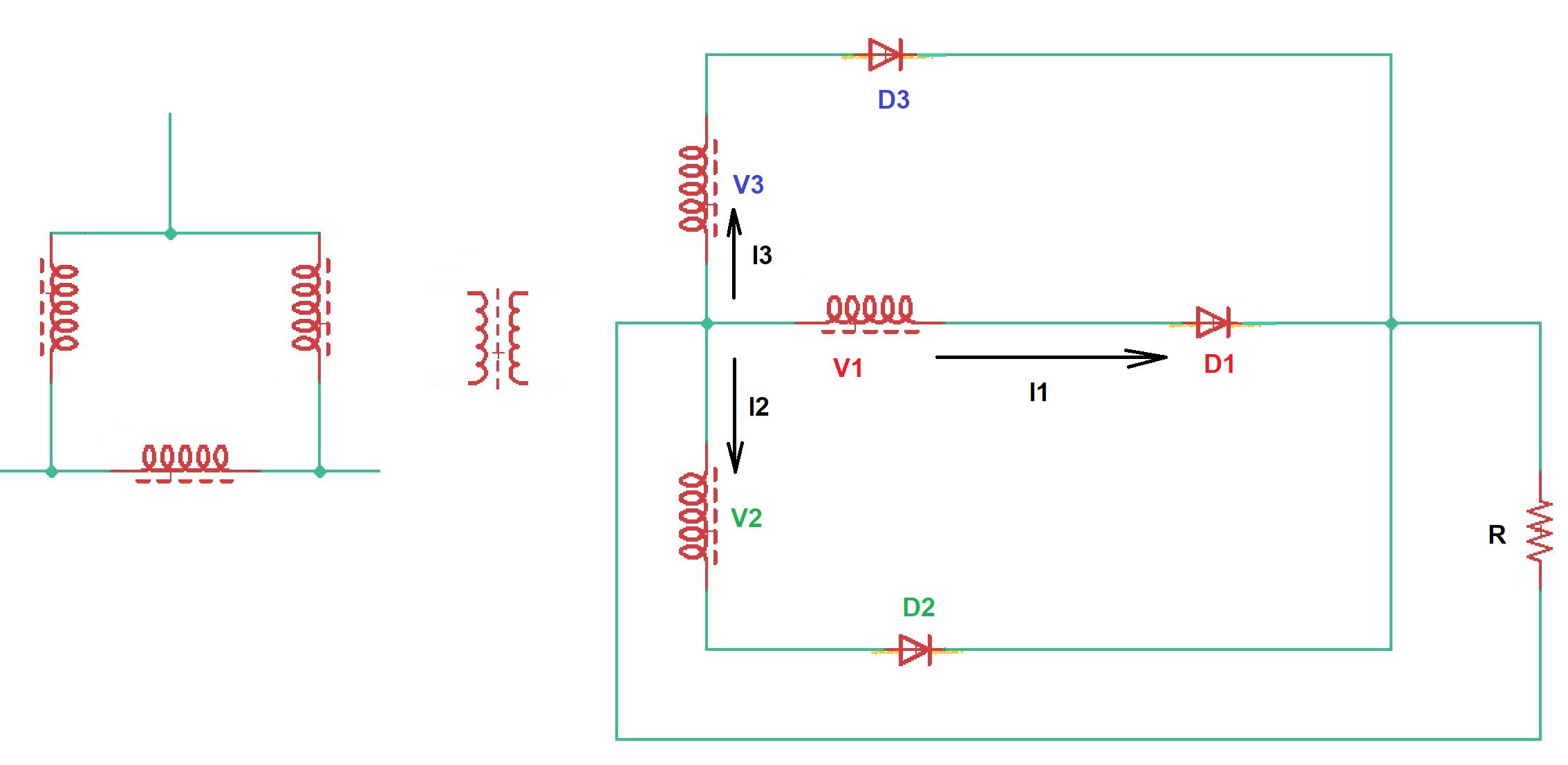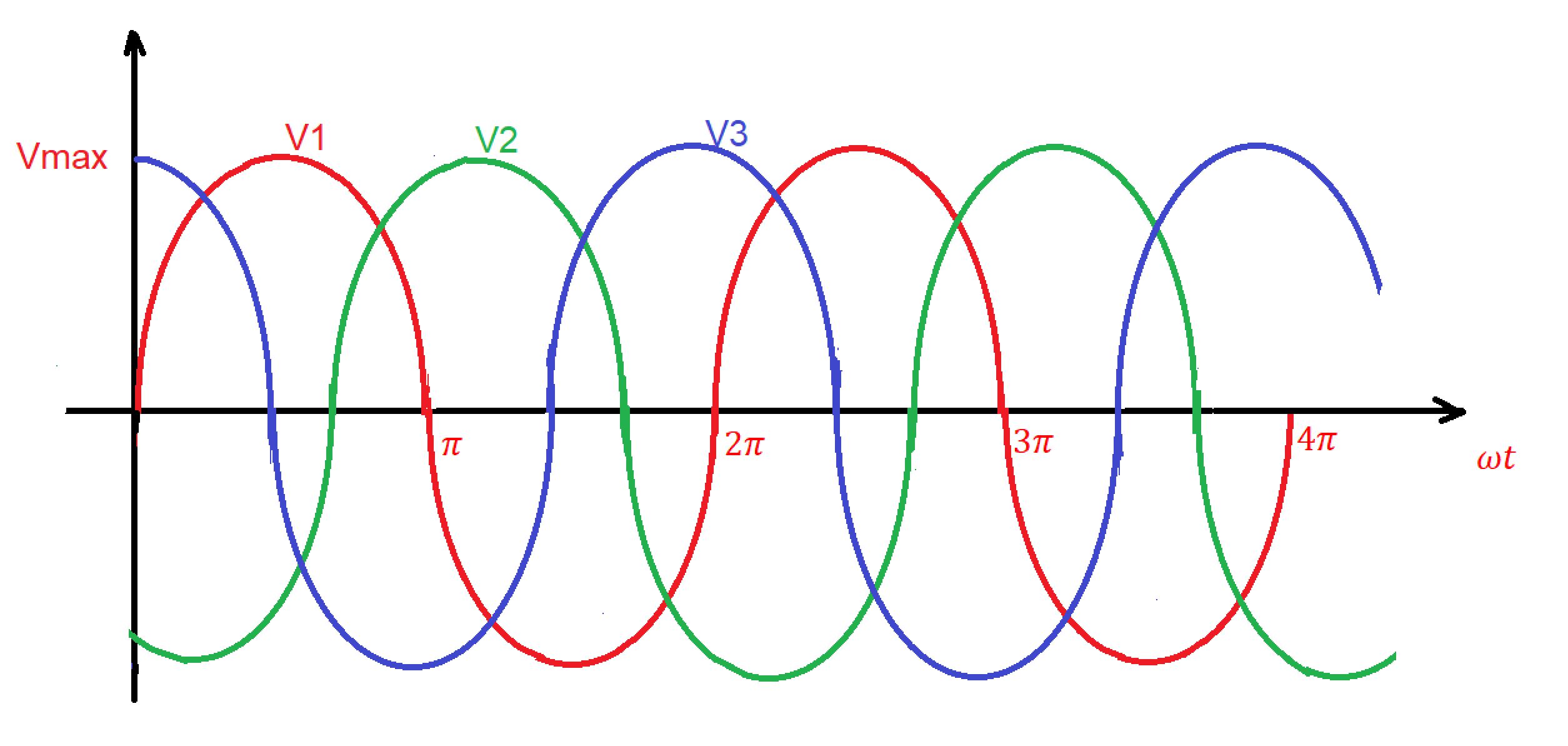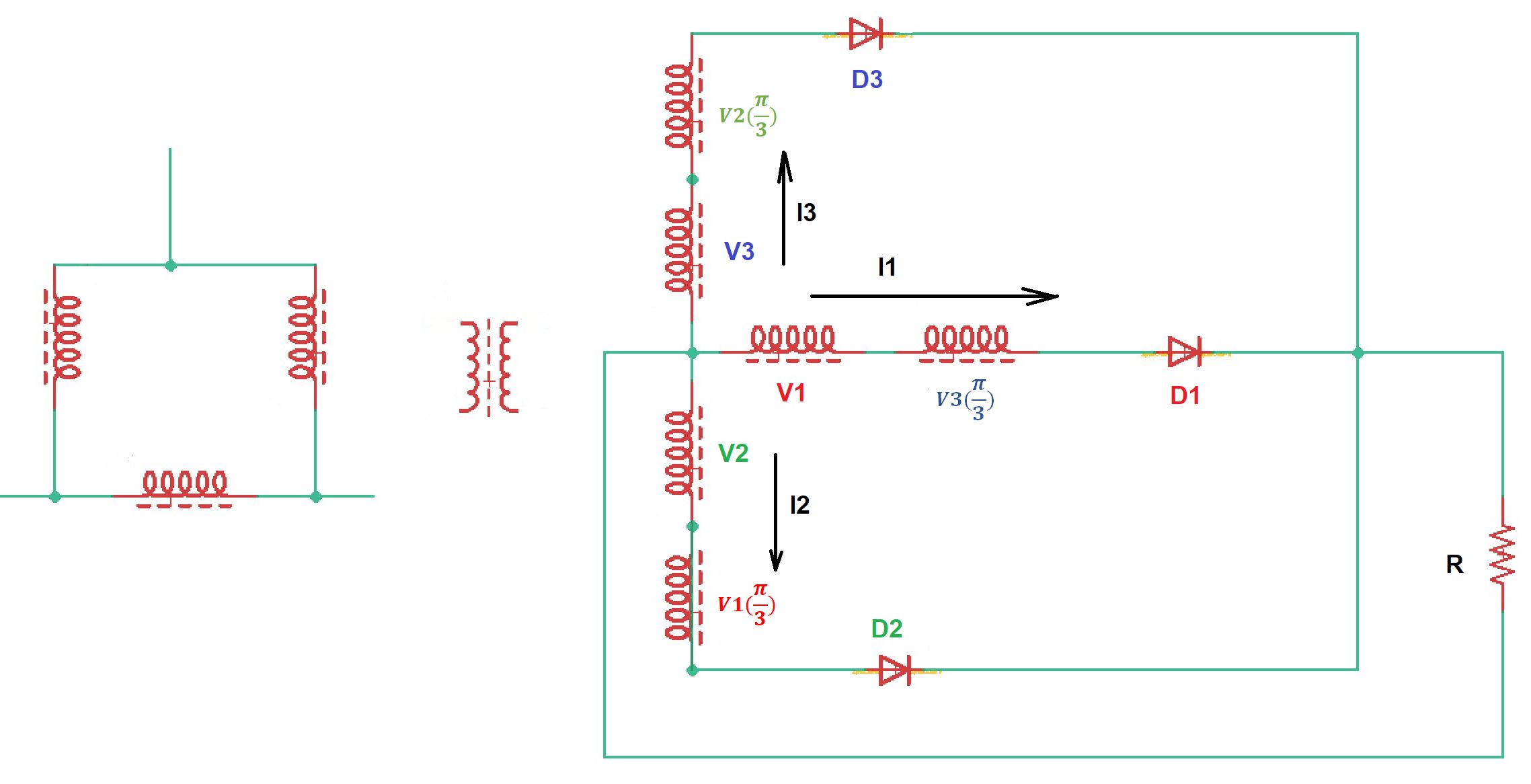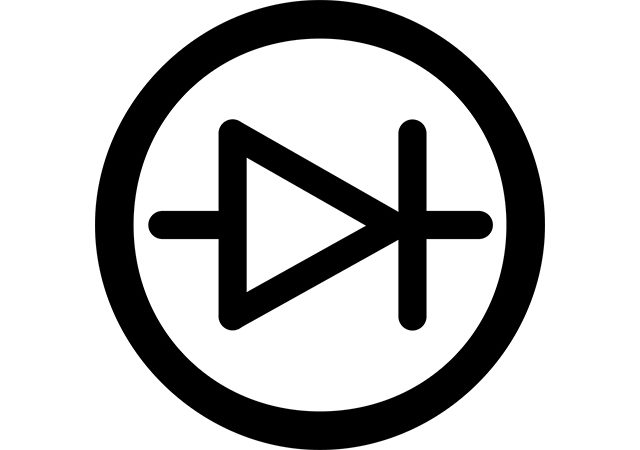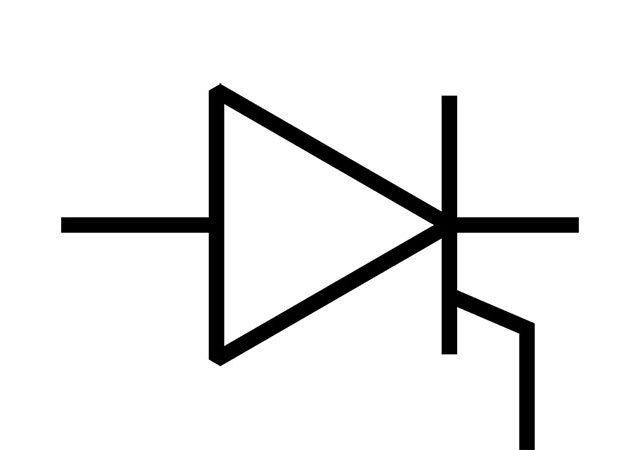Three-phase diode rectifier convert AC balanced signal into stable DC signal where power output is higher than 15kW. Three-phase diode rectifiers can be two types – star rectifier and bridge rectifier.
Star diode rectifier
The three-phase star rectifier is depicted on the figure below.
This rectifier works by the principle, that the phase with the biggest voltage through it , comparing to two other phases, conducts. And conduction angle is .
Here , and .
The most important characteristics of three-phase star rectifier, listed in the datasheets, are:
- Peak repetitive reverse voltage ;
- output ripple frequency ;
- Diode average current ;
- Rectification ratio;
- RMS input voltage per transformer leg ;
- Transformer rating primary VA;
- Transformer rating secondary AV;
- Peak repetitive forward current ;
- Ripple factor;
- Diode RMS current ;
- Form factor;
- Form factor of diode current .
In some conditions 3-phase diode rectifier can experience core saturation. In order to prevent this effect, star diode rectifier schematic can be modified, adding the secondary winding. This connection is also called inter-star. Every secondary winding has phase displacement .
Bridge diode rectifier
The three phase bridge rectifier is presented below. They are used in the applications demanding the highest transformer utilisation factor of three-phase system.
The average values for voltages and currents are:
. RMS value of output voltage .
RMS current through each transformer winding . Thr RMS current value through every diode is . .
For instance, Digi-Key Electronics offers great variety of diode rectifiers.
[1] 3 phase diode rectifiers, “Power Electronics Handbook”, p.154, Muhammad H. Rashid.


